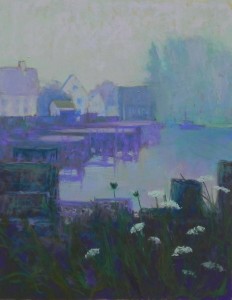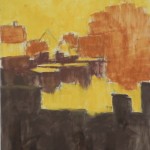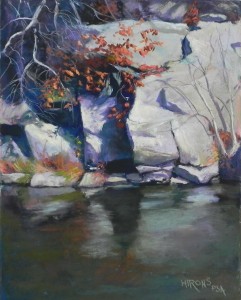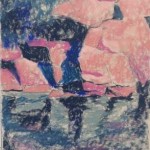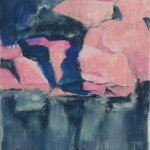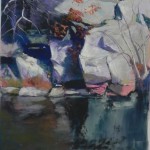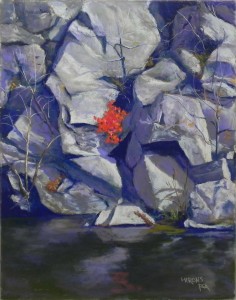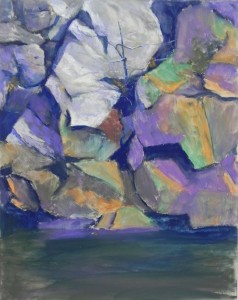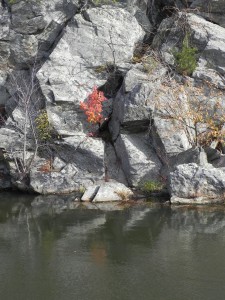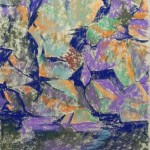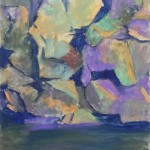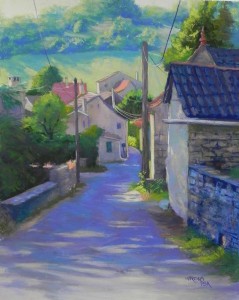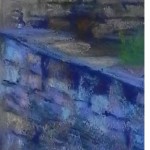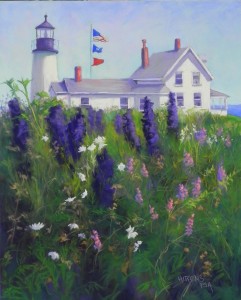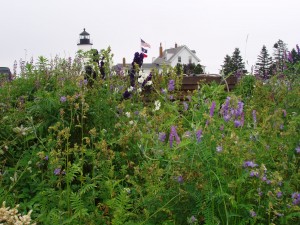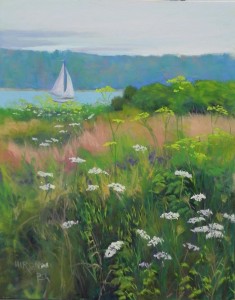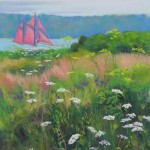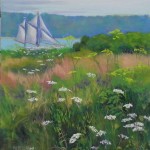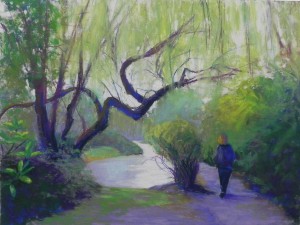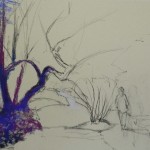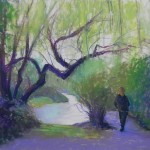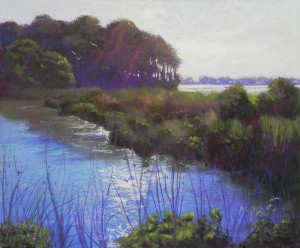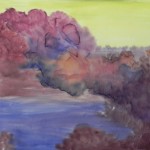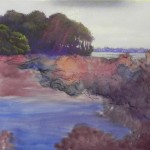Today I finally got to do the demonstration for my Monday class. Several people had requested that I paint fog and there was interest in working from black and white. So I printed out a black and white photo from my 2012 trip to Port Clyde, Maine. I painted this in 2012 as Fog Study in Blue. I thought today’s might become Fog Study in Blue Green, but alas, violet REALLY works for fog! So violet it is. But the entire painting is done in analogous colors of blues, violets and cool blue greens.
For the underpainting, however, I decided to use warm browns and gold. The brown proved to be quite useful in the bottom and the gold came through in the sky and warmed it. In looking at the photo, I could see four values and decided that a monochromatic underpainting in the four values would work. So I kept it simple.
Establishing the color on top wasn’t quite as simple! But I had lots of help from my class and many good suggestions. To begin with, I had made the sky and water the same value (except where there was reflection). This really didn’t work. So I brushed it off and went in with a more mid-light violet. The water now reads cooler than the sky, but I think that reads right. The buildings and large clump of trees were a problem. It helped a lot when I brought sky color down over them, added a little building in front of trees at the left, and broke up the clump of trees.
The mid-ground is a group of piers with reflection in the water. I used violets, a deep blue green and a lighter violet for the top.
The foreground consists of stacked lobster traps with grasses and Queen Anne’s Lace in front of them. I started with them fairly dark, then worked lighter colors on over to give more shape to the traps. I added warm greens into the foreground, the only warm color in the painting. The last thing I did was to add a small lobster boat in the distance to further break up the large tree mass.
It was fun doing the demo in my studio and having such great engagement from my class. But now I’m back to rocks!

